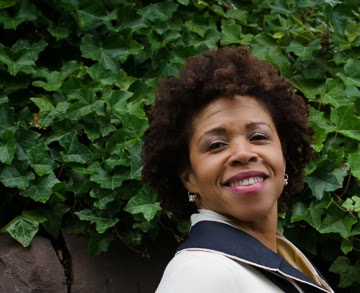This post is part of a series of profiles of Central District residents, part of the “People of the Central Area” project developed and written by Madeline Crowley.

Photo by Madeline Crowley
About Michelle:
Michelle Purnell-Hepburn has spent her life in financial institutions, literally learning at her father’s knee, then working at the Liberty Bank when young. The Liberty Bank was the first African-American owned bank at that time west of the Mississippi. It is an important part of Central Area history.
Your parents contributed to an important part of Central Area history, they were part of the Liberty Bank.
Well, the Liberty Bank of Seattle was a dream of my father. He wanted African-Americans to have the ability to create their own destiny.Liberty Bank, though, was really an off-shoot of an existing financial institution already in the Central Area called Sentinel Credit Union. This was much like Salal Credit Union but much smaller. That had began I believe in late 1940s, maybe the 50s, and the original membership were the Masons.
These were the Prince Hall Masons who met in the Central Area just off of Cherry Street. So on the corner was the “Facts Newspaper,” Fitzgerald Beaver was the proprietor there. One block east was the Masonic Hall, which I believe is condos now, across the street was the (then PhyllisWheatley) YWCA.
That corner of the Central District was where the Sentinel Credit Credit Union started. I started working there when I was very small, embossing and stamping pamphlets. There was a stamp and you had to be very precise with it. I got my start there. I have to admit that my father and his Masonic brothers, their dreams were bigger than a Credit Union. They wanted a financial institution. A bank.
My father, my mother and seven to eight other community leaders founded the Liberty Bank. The initial meetings, the gathering of signatures and the issuing of and the tracking of stock, that was all done in our basement.
The Charter was applied for more than once and was denied. Eventually, the Charter it was approved and the Bank opened in late May 1960.
Can you explain what the situation was for the African-American community without having their own bank? What did that mean for the average person?
For the average person that meant you had to go to the big banks, the SeaFirst Bank or the People’s Bank or Seattle Trust. Then, you basically had to prove your worth, to prove that you had collateral. To prove that you maintained your home, and show that you had a business plan. I’m using terms that are used now that weren’t used then.
What happened to those who were not able to access banking services?
Without access to banking services you are forced to operate by the cash on hand in order to run your entire business. Or you’re finding credit through loan sharking which is charging you a ridiculous rate.

Pingback: Shared Post The People of the Central Area: Michelle Purnell-Hepburn, VP / Controller | WWW.BLACKSEATTLE.COM
Jack Richlen was a founder and Board member and he is very much still alive!
Hi Ian!
Thanks for the additional information, I’ll let Michelle know. Then, I’ll update the article.
That’s one thing about this project, it’s a collection of memories and that’s always going to be less than perfect. She was 10 years old when the bank opened so I’m sure this was an absolutely unintended oversight.
For sure! I didn’t mean anything by it. I absolutely love the oral histories you are putting together.
Hi!
Thanks for the kind words Ian. I appreciate that and I genuinely appreciate the information. (Just wanted to explain why I’d guess it might have been forgotten) I’m sure everyone involved in starting the Bank was proud (rightfully so) of their contribution.
Very cool how, sometimes, motivated individuals can get something started and make a difference for some members of the next generation.
We need more of this kind of story. More of the good news. More of the bad news and struggles associated with it. The richness of the story is in roller coaster ride. Who won and who lost.
When we only see winners and losers as seperate entities – then we have a divided society. For the most part we are all winners and losers on a lifetime ride. And, we can hope that life itself is percieved as a good ride.